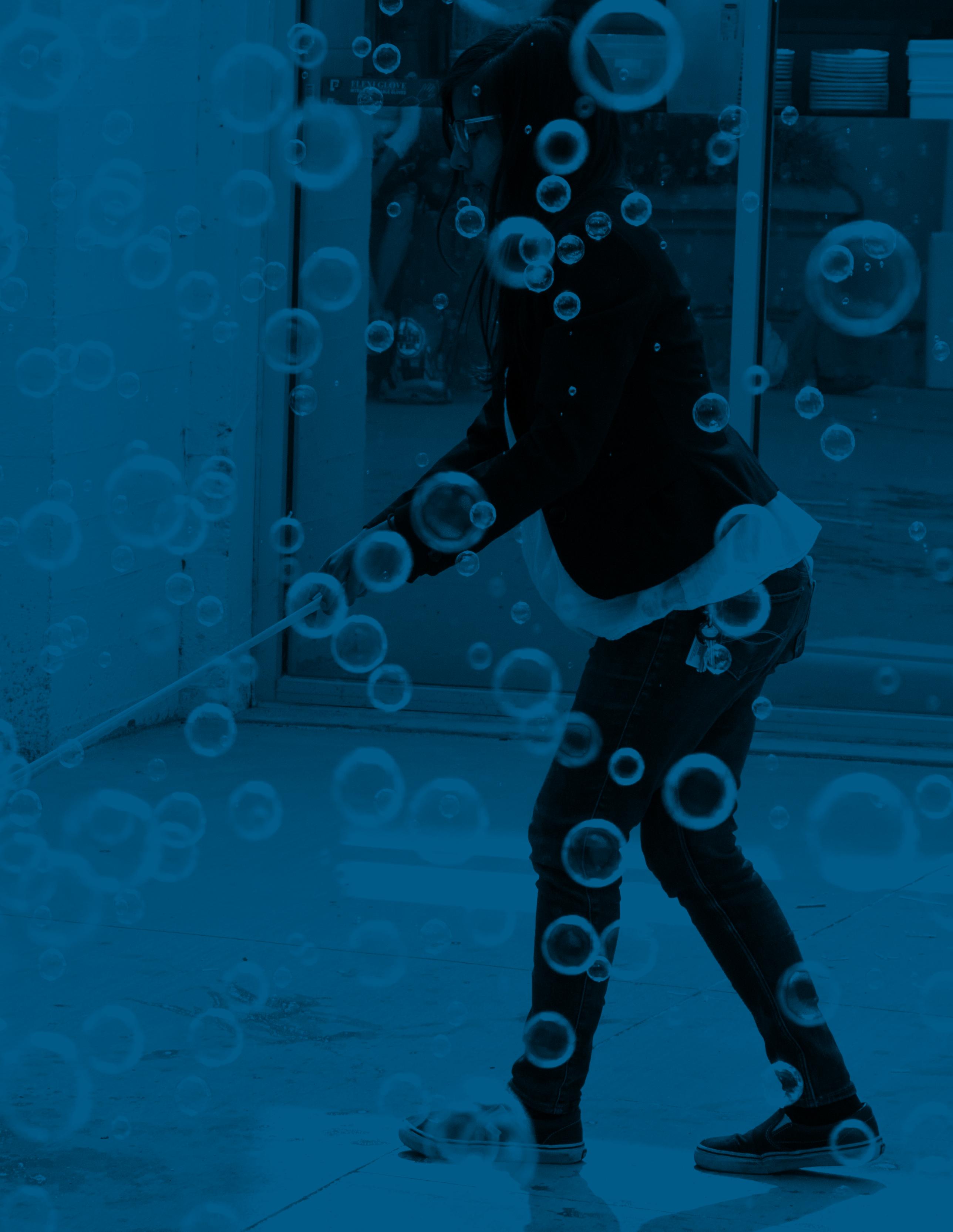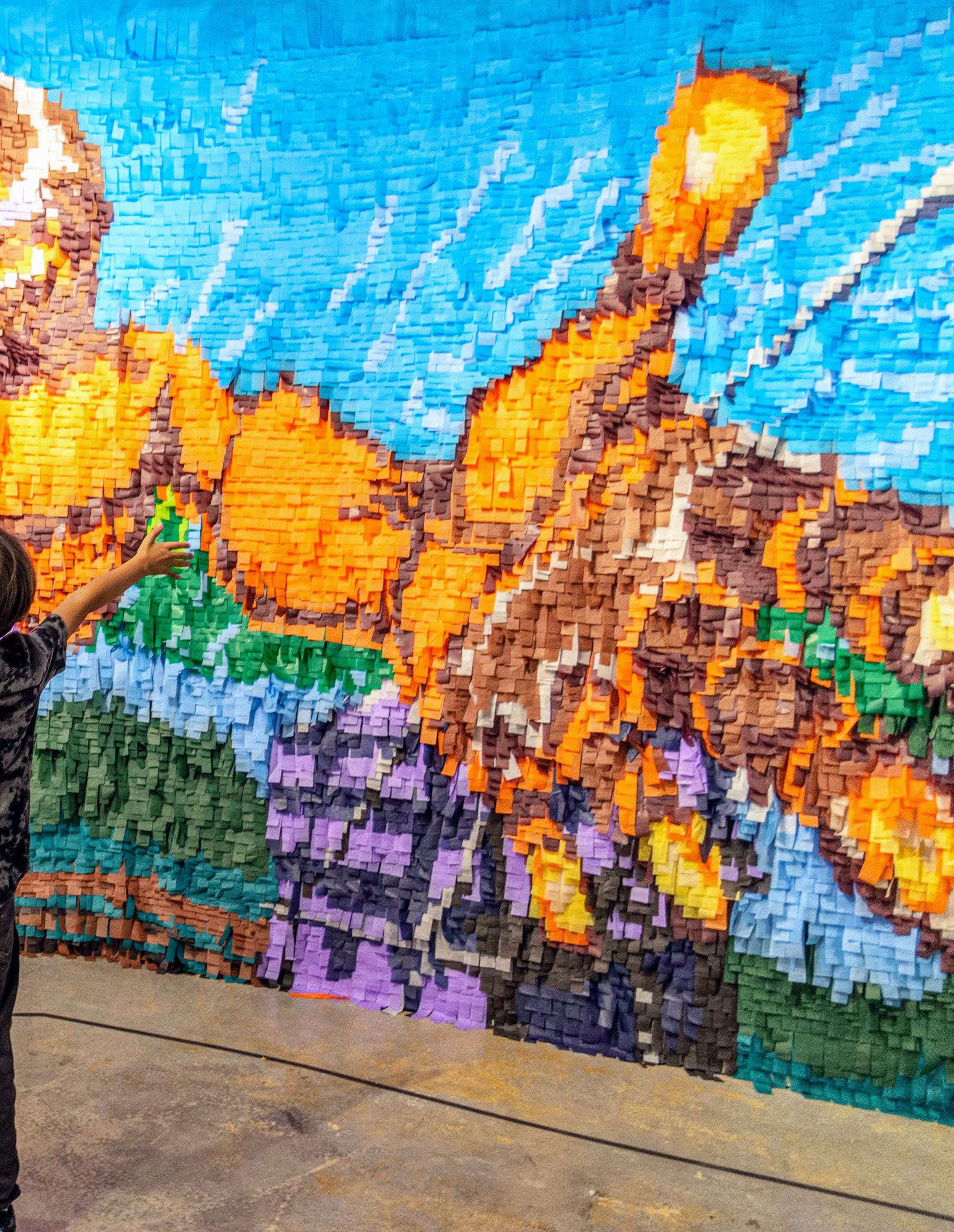
3 minute read
Resilience Strategy
30
Like many of our industry partners, the MAH acted quickly in April 2020 to develop and put in place resilience strategies that would help us adapt to the COVID crisis, both during shelter-in-place and in the years ahead. We continue to evaluate and fine-tune our strategies as we learn how best to serve our community while planning for the MAH’s long-term sustainability. Here are the key components of our resilience strategy and actions taken:
Activating the MAH This is an important time for reflection and dialog around the challenges we face as a society. To that end we have been working on a community-sourced exhibition, In These Uncertain Times, which showcases art and creative responses to the pandemic, juxtaposed with a historical exhibition about the 1918 flu—another epoch in which Santa Cruz County faced a major societal challenge. We intend for the key takeaways to be that our community rallies in times of need, and that no one is alone in this crisis. We are also considering pertinent topics like racial equity, global health, and food security for future issue-driven exhibitions. Last, we have been strategizing how the MAH can best fulfill its mission while utilizing space, both indoors and out, as a resource for our community.
Launching the Virtual MAH We have been hard at work expanding our virtual space as a community resource through various digital platforms. In April, we launched Queer Santa Cruz as our first virtual exhibition, featuring photographs, oral histories, a webinar series, and a bilingual study guide for educators. We have had virtual activities ongoing since March, including film screenings, history podcasts, blog posts, a playlist of local bands, at-home craft activities, free educational resources, and more. We continue to develop new approaches to programming in virtual space in order to reach as many people as possible.
Planning for Reopening We have crafted a safety strategy that puts people first, both staff and guests. Our task force has been working closely with regional and state partners, peer organizations, and local businesses to develop a phased approach to reopening that will align with countywide guidelines and directions from public health officials. Our plan is to start with limited activations in the form of public artworks and select events in some of our more spacious outdoor sites like Abbott Square and Evergreen Cemetery in late summer/fall 2020. Following this, interior spaces of the museum will open incrementally and under suggested guidelines for social distancing and crowd size limitations. We will continue to assess the situation, working closely with our partners, in the hopes of being able to ramp up activities in 2021. Planning for the Future The MAH will undergo a formal strategic planning process in the fall of 2020. This will give us an opportunity to generate and fine-tune the business and financial strategies we have been developing, both to weather the COVID closures and to ensure organizational resilience into the future. We will be looking at disaster preparedness so that we are better prepared to take on the role of “arts and humanities responders” in the event of long-term closures or other unexpected situations. We hope to partner with efforts by Santa Cruz leaders to grow resilience capacity within the community. Although we are not experts in this arena, we know creative thinking and innovative ideas can be helpful in generating and implementing solutions for the benefit of the community.


33

34
35

“Favela’s new take is simultaneously celebratory and defiant, enacting a desire to both live with and liberate historical forms.” —Artforum, on Regeneración installation









